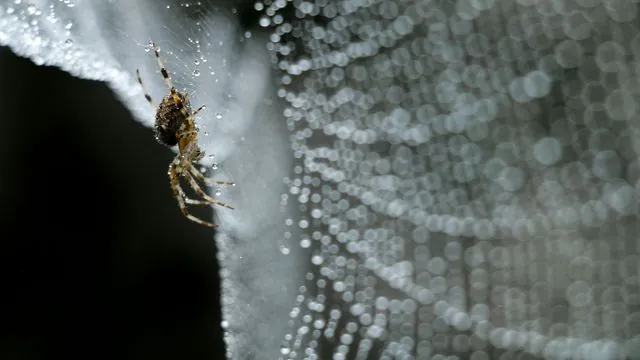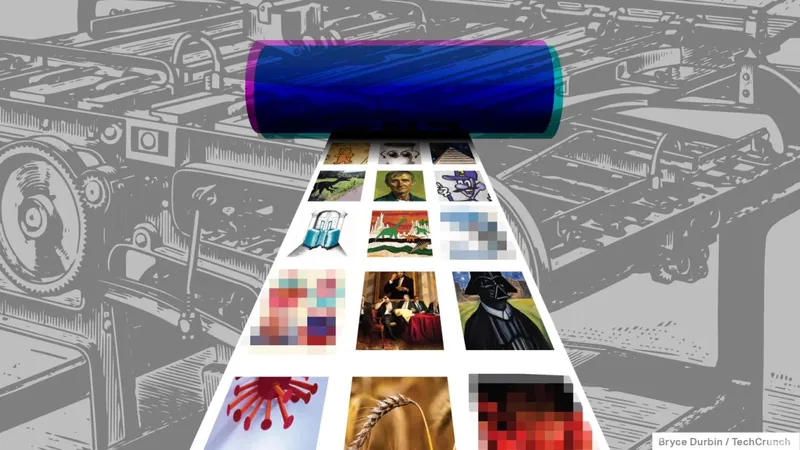
Spider Silk Startups: A Fragile Web of Innovation and Challenges
2024-10-07
Author: Siti
Introduction
In the realm of biotechnology, one of the most tantalizing prospects is the creation of spider silk, a material known for its incredible strength and elasticity. However, researchers have uncovered that scaling up spider silk production poses formidable challenges—most notably due to the inherently territorial and cannibalistic nature of spiders, which complicates efforts to farm them en masse, leading some industry enthusiasts to refer to such setups as “terrifying.”
Groundbreaking Techniques in Spider Silk Production
To sidestep these issues, scientists have turned to groundbreaking techniques like heterologous expression, where they genetically modify other organisms to produce spider silk proteins. Among the most innovative methods is the introduction of spider-silk genes into goats, which then excrete silk proteins in their milk. Additionally, researchers are exploring the potential of alfalfa, silkworms, yeast, and bacteria as production systems. However, the process isn't without its challenges, as the spider silk proteins can be toxic to the host organisms, necessitating ongoing research to mitigate these effects.
Balancing Quality and Cost-Effectiveness
A recent study aims to scrutinize the various host organisms to identify a balance between quality production and cost-effectiveness. The researchers liken the current exploration in spider silk production to the pharmaceutical industry's successful shift towards unicellular organisms cultivated in controlled environments. “We might see a future where microbes become the primary producers of spider silk, much like they have for pharmaceuticals,” commented Dr. Guessous, one of the leading researchers on the project.
Opportunities and Challenges in Market Application
While the hurdles appear daunting, these challenges have illuminated valuable opportunities for academic research to contribute solutions to the industry. The final segment of the study explored possible applications for spider silk and the trade-offs associated with entering competitive markets. The fashion industry, with its established use of silkworm silk, initially seems like a promising target. However, breaking into this sector—a market dominated by affordable synthetic materials—poses substantial barriers. Even luxury brands, known for their silk products, find spider silk too costly at this stage.
Potential High-Performance Applications
Alternatively, the use of spider silk might find its footing in high-performance materials where lightweight and durability are paramount. Applications could range from advanced body armor, like bulletproof vests, to components for automobiles. Moreover, spider silk may even make an appearance in everyday products like shampoos and lotions, where its intrinsic properties could enhance shine and smoothness.
Conclusion and Future Outlook
Despite the eye-opening journey through the complexities of this biomanufacturing space, researchers remain hopeful. Dr. Bui expressed a sense of cautious optimism, noting, “I entered this project with high hopes, but learning about these challenges has tempered my enthusiasm a bit.” Dr. Guessous echoed this sentiment, emphasizing the necessity of assessing scalability before diving into new ventures. “Our study aims to provide a framework for the insights necessary for both academic researchers and would-be entrepreneurs. Hopefully, it serves as a guide for those daring enough to launch the next big startup in this fascinating field!”
As the ambition to revolutionize the production of spider silk continues, the future of this remarkable material remains uncertain yet filled with potential. Will innovative solutions and strategic approaches finally unlock the secrets of spider silk production? Only time will tell!


 Brasil (PT)
Brasil (PT)
 Canada (EN)
Canada (EN)
 Chile (ES)
Chile (ES)
 España (ES)
España (ES)
 France (FR)
France (FR)
 Hong Kong (EN)
Hong Kong (EN)
 Italia (IT)
Italia (IT)
 日本 (JA)
日本 (JA)
 Magyarország (HU)
Magyarország (HU)
 Norge (NO)
Norge (NO)
 Polska (PL)
Polska (PL)
 Schweiz (DE)
Schweiz (DE)
 Singapore (EN)
Singapore (EN)
 Sverige (SV)
Sverige (SV)
 Suomi (FI)
Suomi (FI)
 Türkiye (TR)
Türkiye (TR)